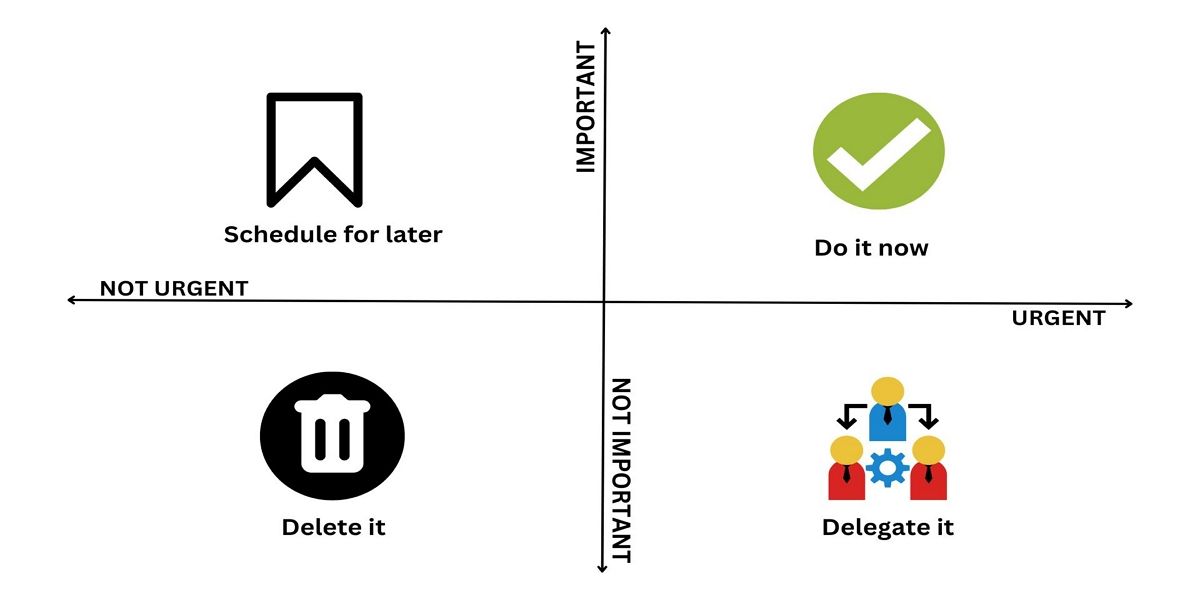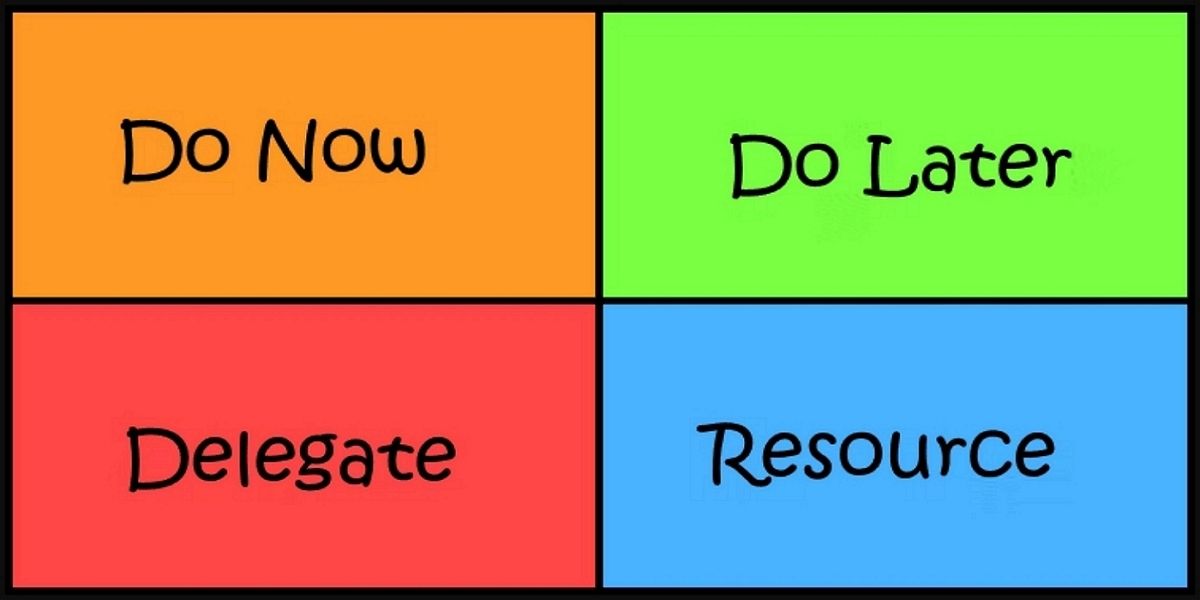Between managing work emails, juggling household chores, and making time for family commitments, it can be challenging to keep up with the demands of our personal and professional lives. A time management strategy can help you recover more hours in the day.
Keep reading to find out how the Eisenhower Matrix differs from the to-do list method, the strengths and weaknesses of each approach, and which method best suits your needs and goals.
The Basics of the Eisenhower Matrix and To-Do Lists
One popular approach to time management is the traditional to-do list. This involves writing down a list of tasks in order of their priority and working through them one by one. While this approach can be helpful, it doesn't always consider the factor of urgency.
On the other hand, the Eisenhower Matrix helps prioritize tasks based on their urgency and importance. This method can help you increase productivity and efficiency by focusing on the most important tasks while helping you to identify the less critical tasks which you can delegate or delay.
Here are four factors to consider while choosing between the two.
1. Prioritization
Prioritization while making a to-do list typically involves writing down all tasks in order of importance and working through them in that order. This method can be effective for simple tasks or projects with a short timeframe. However, for more complex or long-term projects, it may not be the most effective approach.
The Eisenhower Matrix takes a different approach to prioritization. It involves categorizing tasks into four different quadrants based on their urgency and importance:
- Tasks that are both urgent and important, such as a project with a tight deadline.
- Tasks that are important but not urgent, such as long-term planning or skill development.
- Tasks that are urgent but not important, such as duties or meetings that can be delegated or postponed.
- Tasks that are neither urgent nor important, such as low-priority tasks.
By categorizing tasks in this way, the Eisenhower Matrix can help you increase your focus and attention on the most important tasks first and avoid getting slowed down by less critical tasks.
2. Urgency vs. Importance
Before categorizing your tasks, you must understand and segregate them based on their urgency and importance. Analyze every task you have to do by who has to do it and when it needs to be done. The question of “who” would help you understand how important it is. If it requires your personal attention, consider it of high importance.
The question of “when” would help you determine how urgent the task is, so you can decide how long you have before the deadline. Learning to differentiate between and segregate urgent and important tasks is another way to increase productivity by doing more in less time.
While a to-do list primarily serves as a reminder for tasks, the Eisenhower Matrix provides a framework to prioritize tasks based on their urgency and importance. Remember that it doesn't inherently include parameters for deciding the "who" and "when" of tasks within the matrix itself. However, it can be effectively used to make such decisions.
For instance, by assessing the urgency of a task, you can determine if it requires immediate attention or can be scheduled for a later time. Similarly, by considering the importance of a task, you can decide whether it should be personally handled or delegated to someone else.
Although the Eisenhower Matrix doesn't explicitly encompass these aspects, it offers a practical methodology for incorporating them into task management. Therefore, the Eisenhower Matrix's use case can be extended beyond just prioritization and aid in later decision-making regarding task delegation and scheduling, areas where traditional to-do lists may fall short.
3. Flexibility
When you use a to-do list, you constantly have the pressure of doing all the impending tasks in a specific order. Organizing a to-do list using action items also means constantly updating it and rearranging the tasks based on changing urgency or importance.
Moreover, when you have a tight deadline, you don’t get the time to analyze your tasks that way and might end up working on them all at once, disregarding the benefits of a to-do list.
When you prioritize tasks for productivity with the Eisenhower Matrix, it gives you the flexibility to choose based on their importance and urgency. When you have the liberty to choose the things that need to be done urgently, you get the flexibility to do other non-urgent tasks on your own terms.
By categorizing your tasks into different quadrangles of urgency and importance, you can plan for all your tasks in advance. It also helps you allocate time for all your tasks, ensuring nothing important slips through the cracks.
4. Time Commitment
With a to-do list, you check the tasks off your list as you complete them. While you may still have other more important tasks in your mind (which can contribute to a lack of focus), the task you’re currently working on will require your full attention.
The Eisenhower Matrix system can help you focus your time and attention on the tasks falling under the first quadrangle. This helps to hammer down the critical and value-add tasks within your workflow and complete them in time, helping you to avoid time management mistakes as well.
Choosing the Right Time Management Method
Let’s take the example of completing a project with a tight deadline. In a to-do list, your tasks will be arranged in a simple chronological order. However, with the Eisenhower Matrix, the most urgent and important tasks would fall into the first quadrant, indicating their high urgency and importance.
Then, you have the second quadrant, where you might have long-term planning or skill development. Those tasks can be done gradually since they take more time. While these tasks may not have an immediate deadline, they are critical and essential to succeed in the long run.
The tasks falling in the third quadrant can be delegated to your subordinates to ensure they’re completed within the deadline. For example, you might want some documents delivered to your client before the end of the day. You can delegate the task to a courier, making sure that the task is done in time without your active involvement.
The tasks falling under the fourth quadrant can be both delegated and delayed since it is neither a priority nor an important task. For example, buying new office stationery. While the traditional to-do list only reminds you of all your tasks, the Eisenhower Matrix system helps you focus on the important and urgent tasks first.
Nail Your Urgent Tasks With the Eisenhower Matrix
A to-do list can help you save time on short-term tasks that do not recur, such as a checklist or a grocery list. However, the Eisenhower Matrix system will help you with tasks that recur or continue over a gradual period.
You can choose and decide the what, the when, and the how of doing the tasks and make sure the tasks are done in time without delay.







